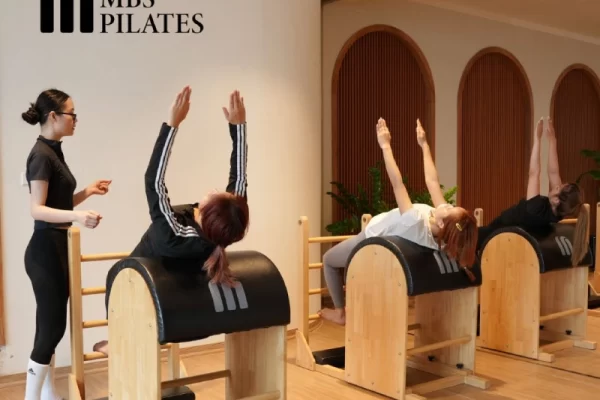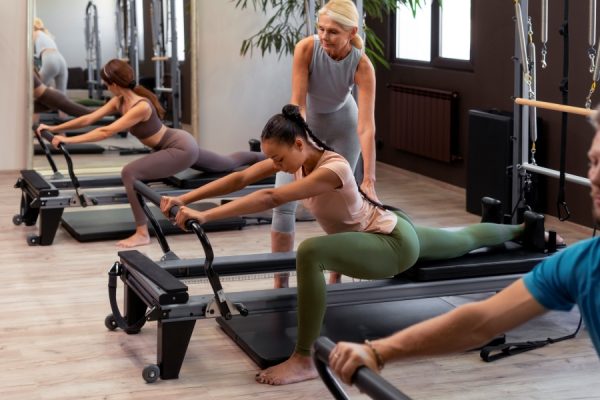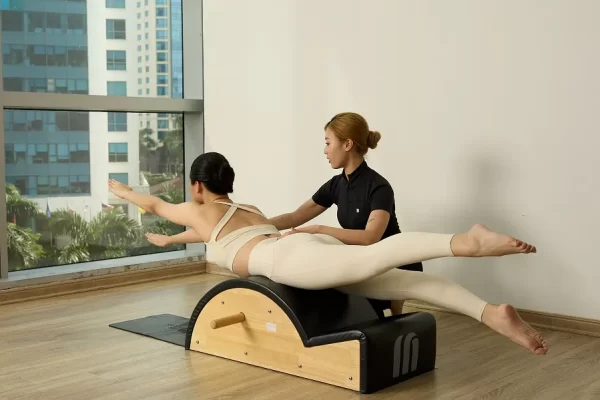Pilates Chair: Benefits, Ideal Users, and Essential Exercises
24/11/2025The Pilates Chair is a compact yet powerful apparatus that has become a rising trend in modern studios thanks to its ability to build strength, improve balance, and support rehabilitation. With its versatile design and diverse applications, the Pilates Chair is suitable not only for beginners but also for professionals and athletes. This article explores its structure, functions, and effective training styles.
Understanding the Pilates Chair
The Pilates Chair is one of the most effective and unique apparatuses in the Pilates method, helping improve strength and overall body flexibility. Let’s explore the essential information about the Pilates Chair and its development history below.
What Is a Pilates Chair?
The Pilates Chair, also known as the Wunda Chair, was designed by Joseph Pilates. Resembling a backless wooden chair, it features a cushioned seat and a pedal attached to springs on both sides, offering light, medium, or strong resistance.
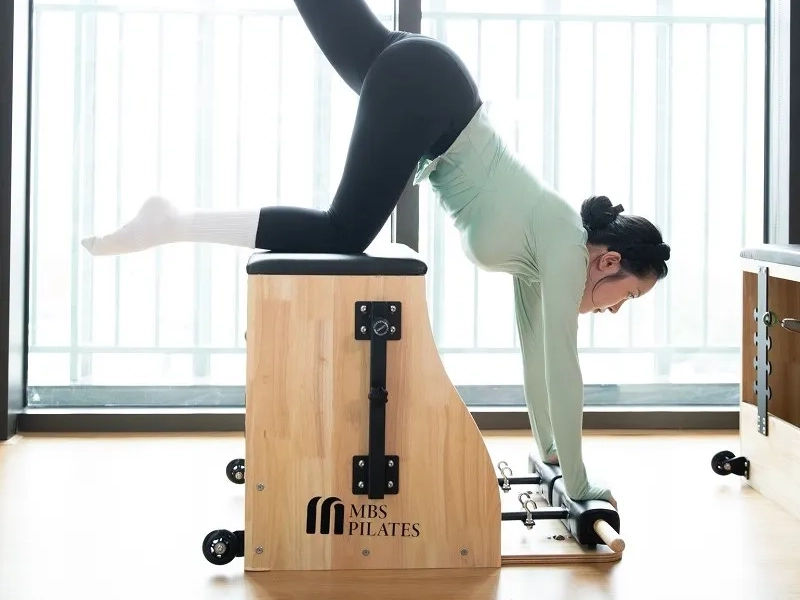
The Wunda Chair is a popular tool in Pilates.
Exercises on the Wunda Chair can be performed while sitting, standing in front, behind, or on top of the chair, using either hands or feet on the pedal. Although less popular than the Cadillac or Reformer, the Pilates Chair remains a trusted training companion due to its compact size and versatility.
The Origin of the Pilates Chair
The Wunda Chair was created specifically for dancer Kathy Grant, one of the first generation Pilates instructors. Invented in 1945, it was among the first devices to use springs attached to a pedal.
Joseph Pilates designed the chair as a compact apparatus suitable for home practice, easily convertible into a functional seat. He filed the patent on February 3, 1930, and it was approved on August 30, 1932.
Benefits of the Wunda Chair in Pilates
The Wunda Chair is especially valuable for stability and mobility training because its structure supports the body through challenging techniques and postures. Unlike mat Pilates, which relies solely on body weight and gravity, the Pilates Chair provides natural additional resistance.
It delivers powerful benefits to the upper body neck, arms, and shoulders as well as the lower body. The Pilates Chair strengthens the lower back, core, spine, and pelvic region, making it an excellent tool for developing core stability.
Moreover, the Wunda Chair can accelerate injury recovery more effectively than mat exercises and helps reduce muscle discomfort.
Who Is the Pilates Chair Suitable For?
The Wunda Chair is ideal for individuals recovering from injuries or those with limited mobility. Some models feature split pedals, increasing versatility and supporting both sports training and rehabilitation. Using one hand or foot on the split pedal allows users to isolate and strengthen weaker body parts safely with additional repetitions.
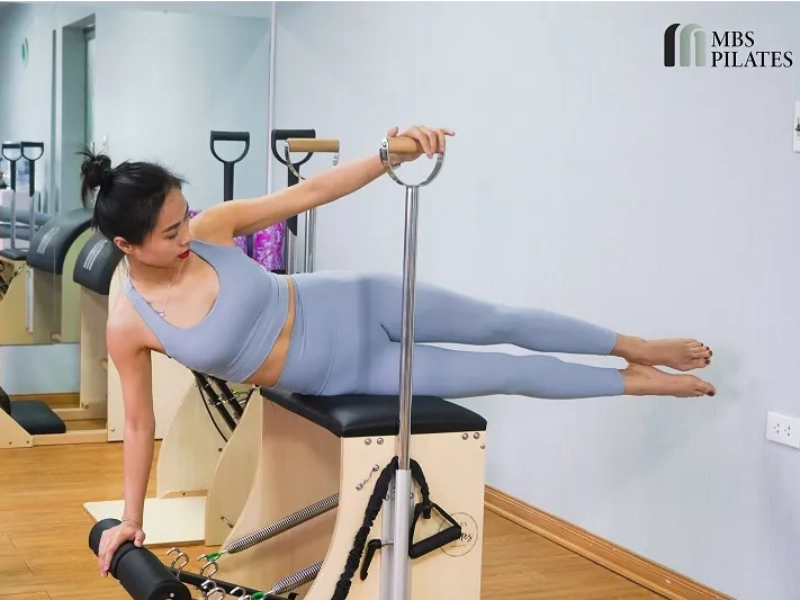
Pilates chairs are suitable for people recovering from injury or with limited mobility.
The Pilates Chair is also suitable for pregnant women. Many Wunda Chair exercises resemble Reformer movements but are performed sitting or standing comfortable and safe for all stages of pregnancy.
Is Training on the Wunda Chair Difficult?
Training on the Pilates Chair is challenging because only a small portion of the body is supported. For example, “Footwork on the Wunda Chair” is similar to Reformer footwork, but without back support, balance becomes significantly harder.
These exercises are best suited for practitioners with good body awareness and familiarity with similar Reformer movements. Risks may include pinched fingers or toes, improper alignment, or loss of balance.
The safest way to avoid injuries is to train under the guidance of an experienced instructor and understand the chair’s mechanics before attempting more complex movements.
Simple Exercises on the Pilates Chair
Below are some basic Pilates exercises you can perform with the Wunda Chair:

Some simple Pilates activities can be done with Wunda.
- Footwork: Press the pedal using your feet while seated.
- Going Up Front: Step from the pedal onto the chair, similar to climbing a step.
- Push Down: Stand facing the chair, hinge forward, and press the pedal with your hands.
- Pull Ups: Stand on the pedal, place both hands on the back edge of the chair, and lift your body upward.
- Push Ups: Hold a plank position with both feet on the pedal for added resistance.
Training with the Pilates Chair offers diverse benefits and is suitable for everyone from beginners to advanced practitioners.
Beyond the basic exercises introduced here, you can explore more advanced movements with proper guidance. Consult your instructor for a routine tailored to your level and goals.
Through this article, we’ve gained a deeper understanding of the Pilates Chair and its many benefits. More than just a supporting apparatus, it plays an essential role in enhancing overall physical health. With its ability to build strength, improve mobility, and support injury recovery, the Pilates Chair deserves a place in every Pilates training program. Try it for yourself and feel the remarkable difference it brings to your body and well being.

